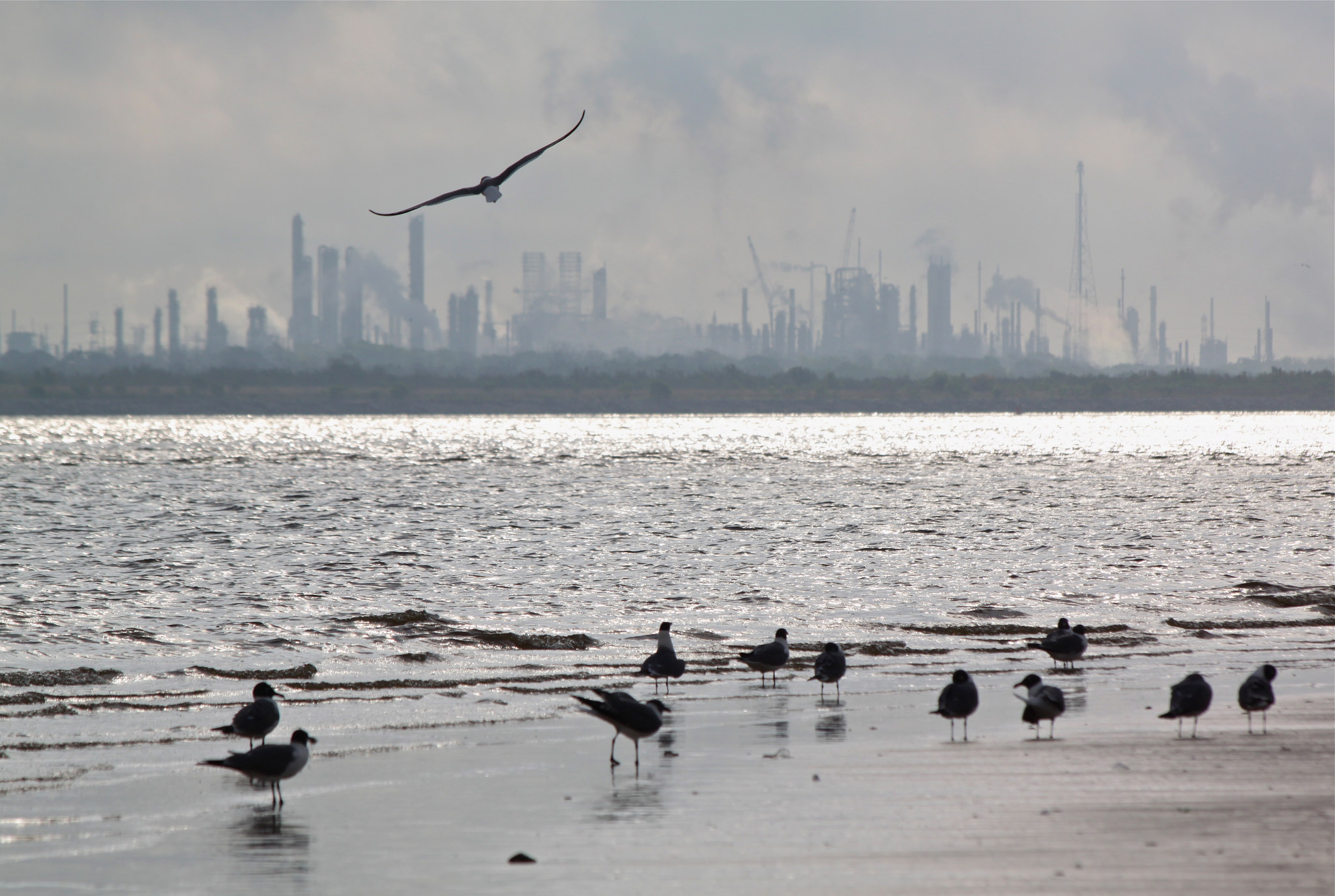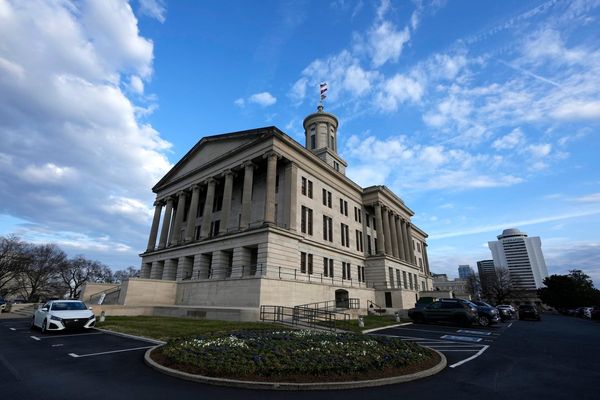A hulking new $10 billion ethane cracker near Corpus Christi set for completion by 2022. A trio of approved liquified natural gas export terminals near Brownsville that could be up and running by the end of 2023. A $5 billion ethylene processing plant in Orange County planned to start operating in 2024. A $6.6 billion petrochemical expansion in Port Arthur that could be online by mid-decade.
The explosive boom in the oil and gas industry has ushered in a rapid, nationwide buildup of new oil, gas, and petrochemical facilities across the supply chain. In Texas and Louisiana alone, this new infrastructure could lead to more than half-a-billion tons of added greenhouse gas emissions each year by 2030, according to a new study by researchers at the University of Texas at Austin. That’s equivalent to 8 percent of the United States’ current annual emissions and is roughly equal to emissions from 131 coal-fired power plants.
The report is unique in that it not only measures the projected emissions at the site of drilling, a well-studied area, but also considers the outputs from elements further downstream in the industry supply chain—pipelines, refineries, and petrochemical operations—that are overlooked more often. As the report found, new petrochemical and refinery plants popping up all along the Gulf Coast are expected to produce the largest share of new emissions, 46 percent of the total half-billion tons.

“From wildfires in Australia to extreme flooding during Hurricane Harvey, this [University of Texas] report adds to a mounting pile of evidence that we need to move aggressively to eliminate our dependence on oil and gas,” says Emma Pabst of the advocacy group Environment Texas. “Instead, Texas is embarking on a fool’s errand, building infrastructure that will lock us into decades of polluting fossil fuels, and impairing our ability to achieve what our climate reality requires.”
The UT-Austin report comes in the wake of another recent study by the Environmental Integrity Project, which found that the 157 new or expanded oil and gas industry projects currently in the hopper could account for 227 tons of additional greenhouse gas emissions by 2025. The group arrived at this number by accounting strictly for permitted emissions, while the UT study factored in future permitted and non-permitted emissions.
Plans for new projects are abundant in Texas, and would account for a significant share of the additional greenhouse gas emissions. Four of the 10 new petrochemical plants projected to have the biggest pollution footprint are in the state, according to estimates by the Environmental Integrity Project.
In San Patricio County just outside Corpus Christi, Exxon Mobil and its Saudi Arabia partner, SABIC, have been planning to spend $10 billion to build the world’s biggest ethane cracker, which turns hydrocarbons into ethylene, a central element in the production of plastics. This new plant alone could produce 3 million tons of greenhouse gas emissions each year, which would make it the fourth-worst projected petrochemical emitter in the country. A $6.6 billion expansion of Motiva Enterprises’ petrochemical operations in Port Arthur would produce closer to 4 million tons of emissions each year, making it the third-worst emitter.
Another facet of the industry boom is the development of new infrastructure to export liquified natural gas, which has quickly become a highly lucrative market. But as the researchers found, the glut of proposed LNG terminals would be one of the biggest sources of emissions, at about 100 million tons a year. Many of these LNG processing plants and storage terminals are cropping up along the Texas Gulf Coast. Six of the top-10 greenhouse-gas emitting LNG facilities are or will be in the Lone Star State. That list includes all three of the LNG facilities planned for construction in the highly sensitive habitat along the Gulf Coast near Brownsville; the Rio Grande LNG terminal is projected to spew about 8.2 million tons annually.
The expansion of the oil and gas industry’s already-dense infrastructure footprint along the Texas Gulf Coast means that explosions like the one in November at the TPC Group chemical plant in Port Neches—which spewed toxic gases into the air—could become even more common. The everyday harms that come from pollution disproportionately affect poor and black and brown people—and will become even worse. So too will the huge risks that come with hurricane season, prompting last-second plant shutdowns that result in dangerous plumes of pollution.
In order to feasibly hold global warming within 2.7 degrees Fahrenheit—which most climate scientists agree is the threshold to avoid the worst potential feedback loops that come with the planet’s warming—the fossil fuel industry needs to be gradually ramped down and shuttered. Instead, it’s going in the opposite direction. The Permian Basin, the center of the Texas oil and gas boom, could soon be responsible for about 40 percent of the country’s carbon pollution.
Since 2010, the fossil fuel industry has invested more than $200 billion in new projects linked to shale gas unlocked by fracking, much of it aimed at expanding the Gulf Coast’s capacity to keep pace with the Permian Basin boom. Every dollar invested by the industry on a new project is another dollar of added incentive to resist the actions needed to stop the world from locking in its fate of climate catastrophe.
READ MORE:
-
A Radical Proposal Calls for a Moratorium on Deportations: The Migrant Justice Platform also offers a simple solution to address the tension between native-born and foreign workers: Protect immigrants’ right to organize.
-
‘Cheer’ Takes an Overlooked Sport Off the Sidelines: The Netflix show about a Corsicana cheerleading squad’s journey to nationals explores an indignity I remember well from my time as a high school dancer: training for intense athletic competitions while being reduced to halftime entertainment.
-
How the San Antonio Police Are Rethinking Mental Health: A new documentary on policing in San Antonio makes a simple suggestion: Instead of arresting mentally ill people, listen to them.







